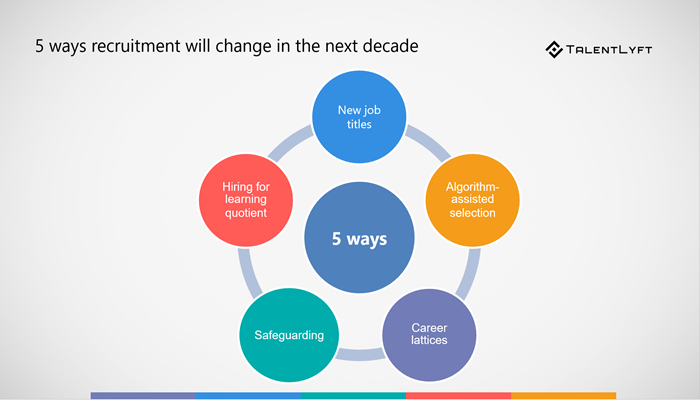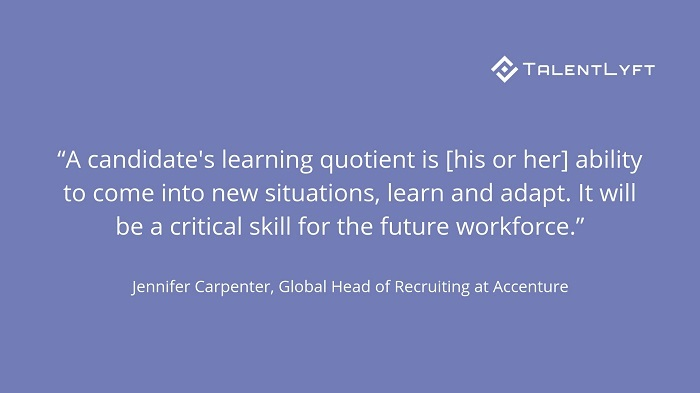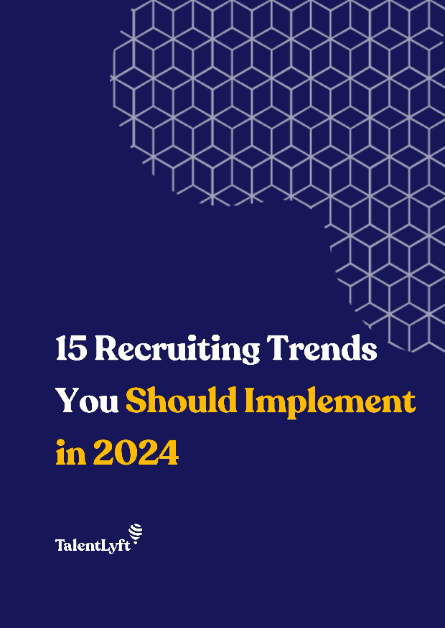
The recruitment industry will change a lot over the next 10 years. In this blog post, you will learn about the top 5 ways recruitment will change over the next decade. How will we hire in the future? Read on to find out!
The recruitment industry will change a lot over the next 10 years. In this blog post, you will learn about the top 5 ways recruitment will change over the next decade. How will we hire in the future? Read on to find out!
The world of work is changing. The nine-to-five isn’t nine-to-five anymore, and technologies like artificial intelligence, automation and virtual reality are all altering the way people do their jobs.
So what does this mean for recruitment? Tech trends have already reshaped recruiting in 2019. What would we see if we asked a crystal ball to show us the recruitment industry a decade from now?
➡️ Download free eBook: 15 Recruiting Trends You Should Implement in 2019!
Here are the top 5 ways the recruitment industry will change over the next 10 years:

In 2016 The World Economic Forum predicted that 65% of primary school children would grow up to work in jobs that don’t even exist today. By 2028 there’s a good chance that a whole new dictionary of job titles and job descriptions will exist, and recruiters will need to become fluent in this new lexicon.
In part, this influx of new job titles will be due to the effect artificial intelligence and automation will have on existing jobs. For a few years now, the media has been doom-mongering. Reporting on places like China where, in May 2018, the world’s first employee-free bank opened its doors, newspapers and magazines have speculated that it won’t be long before robots are replacing humans in all the world’s industries.
There’s no denying that jobs in certain sectors will be affected by these emerging technologies. Business advisory firm Deloitte has suggested that the wholesale and retail sector is likely to become much more automated over the coming years – affecting more than two million jobs. Careers in driving and delivery could also be affected as driverless vehicle and drone delivery technology becomes more advanced.
However, as some jobs disappear, others will emerge. IT experts Cognizant have already predicted the titles of 21 new job roles that they expect to be coined in the next 10 years. These include Data Detectives, AI Business Development Officer, Master of Edge Computing and even a Walker/Talker – a person employed full-time to keep the increasingly aging population company.
Once upon a time, recruiters had to sit at their desks with a pint or two of coffee and paw through a Pisa-style tower of paper resumes. Today, it’s not that different. Applications may be digitized, but recruiters still tend to have to read batches of CVs in order to shortlist applicants.
First of all, this is time-consuming. Second of all, this approach isn’t always accurate. Due to the aforementioned time pressures, the average recruiter is thought to spend just six seconds scanning a resume to determine if they want to consider an applicant. When time is tight, errors can occur in selection.
Finally, this CV-centred approach to recruitment can lead to bias. Of course, recruiters try to learn how to avoid bias in recruitment and be as neutral as possible, but as humans, we are hard-wired to be biased in some ways, especially when it comes to aspects like gender and age. As the population gets older, eliminating age bias in recruitment will become even more important.
This is where algorithm-assisted selection and shortlisting come in. In the next 10 years, recruiters will get access to powerful computer programs that can analyze data, first in talent pools and databases, and then in wider big data collections, in order to shortlist the perfect candidates for roles, regardless of gender and age etc. Recruiters can then focus on executing higher-level selection tasks and techniques and using their intuition to cherry-pick the top person for the job.
It wasn’t long ago that people viewed jobs as jobs for life. Employees stayed at companies for 10, 20, and sometimes 30-plus years. By today’s standards, workers are due to a long-service award if they reach three or four years.
Not only do people change companies regularly, they switch up their job titles, too. A journalist can move to marketing or PR, and an HR professional can become a travel agent.
Whereas the employees themselves see no problem in this varied approach to work, termed the career lattice as opposed to the career ladder, employers can often be of the opposite opinion. Recruiting costs money, they don’t want to invest in hiring a candidate only for that person to leave to become a wing walker a year down the line.
The task of successful recruiters of the future will be to reassure employers about lattice workers, as well as find roles for the lattice workers that offer a workplace culture, as well as a career, that will make them want to commit to a company.
As job tenures last shorter amounts of time and employees feel empowered to start new careers in new industries that are unconnected to their former fields, safeguarding will become more important than ever before.
In the future, it will be the best practice for candidates to send in DBS checks with their resumes. Everyone wants to feel safe in their place of work, and DBS checks as standard are just a small step towards achieving this. The recruitment industry can play a huge role in safeguarding workplaces in all areas of industry.
In late 2017 expert recruiter Jennifer Carpenter, global head of recruiting at Accenture, said that recruiters of the future should screen for potential rather than experience or current skills.

She coined the term learning quotient, suggesting that recruiters should shortlist candidates on how easily they adapt to new situations and how quickly they are able to pick up new information.
If companies select candidates based on their learning quotient and other talents, like creativity and willingness to work hard, they will create a fluid workforce that can move sideways, diagonally and upwards to carry out a variety of jobs in a company, so that work gets done quickly and with passion.
In the future, the recruitment industry might adopt a series of official tests for learning quotient. Today’s recruiters can make a start in taking this into account during their selection process, however, by looking out for signs of independent upskilling on applications.
Jagriti Patwari is a chartered accountant by profession and her skills from working in a highly regulated profession have been put to good use in the employee screening business. As director of Online DBS Checks Jagriti is at the forefront of the employee screening world, providing clients with pre-employment vetting services such as DBS formally known as CRB checking, and other background checking.












